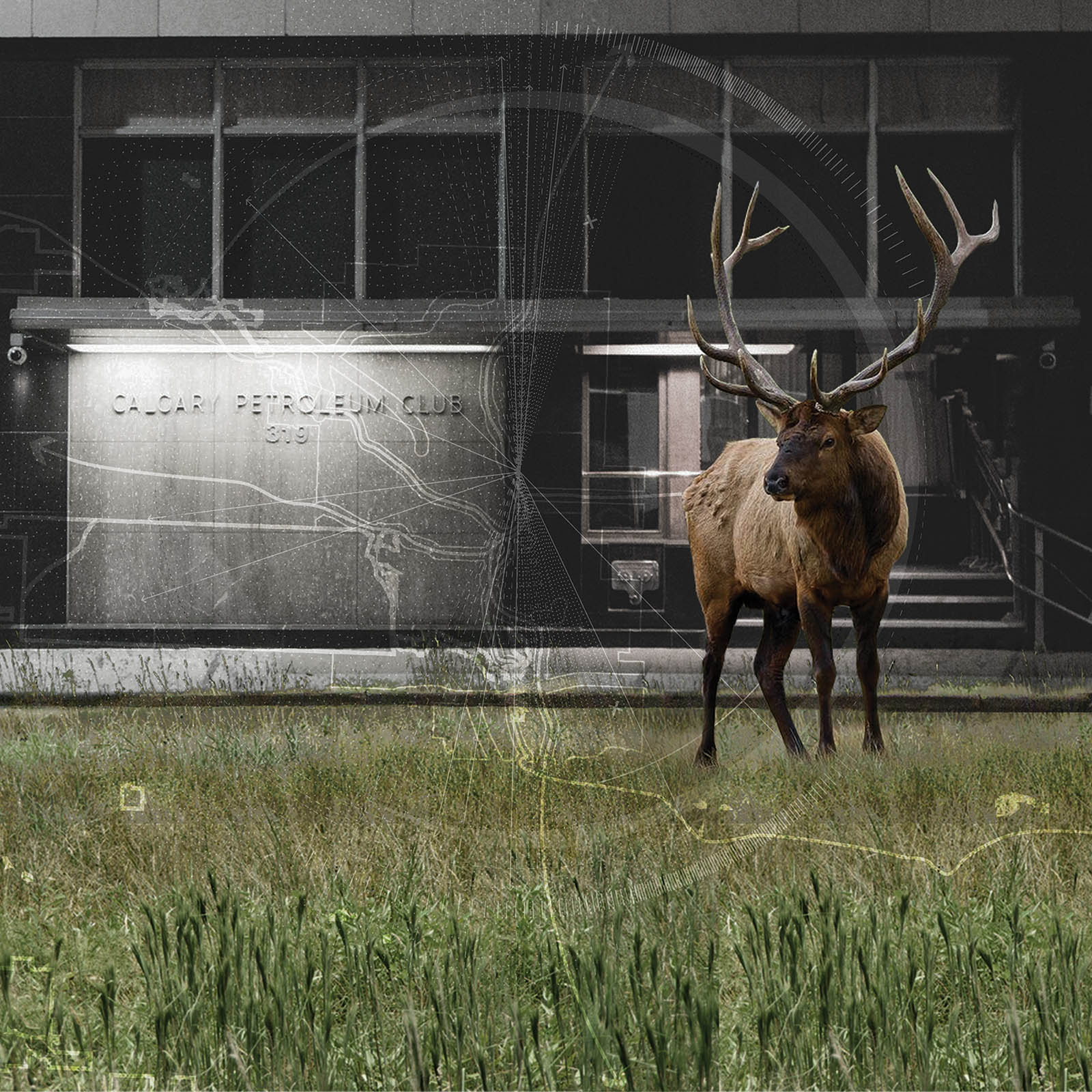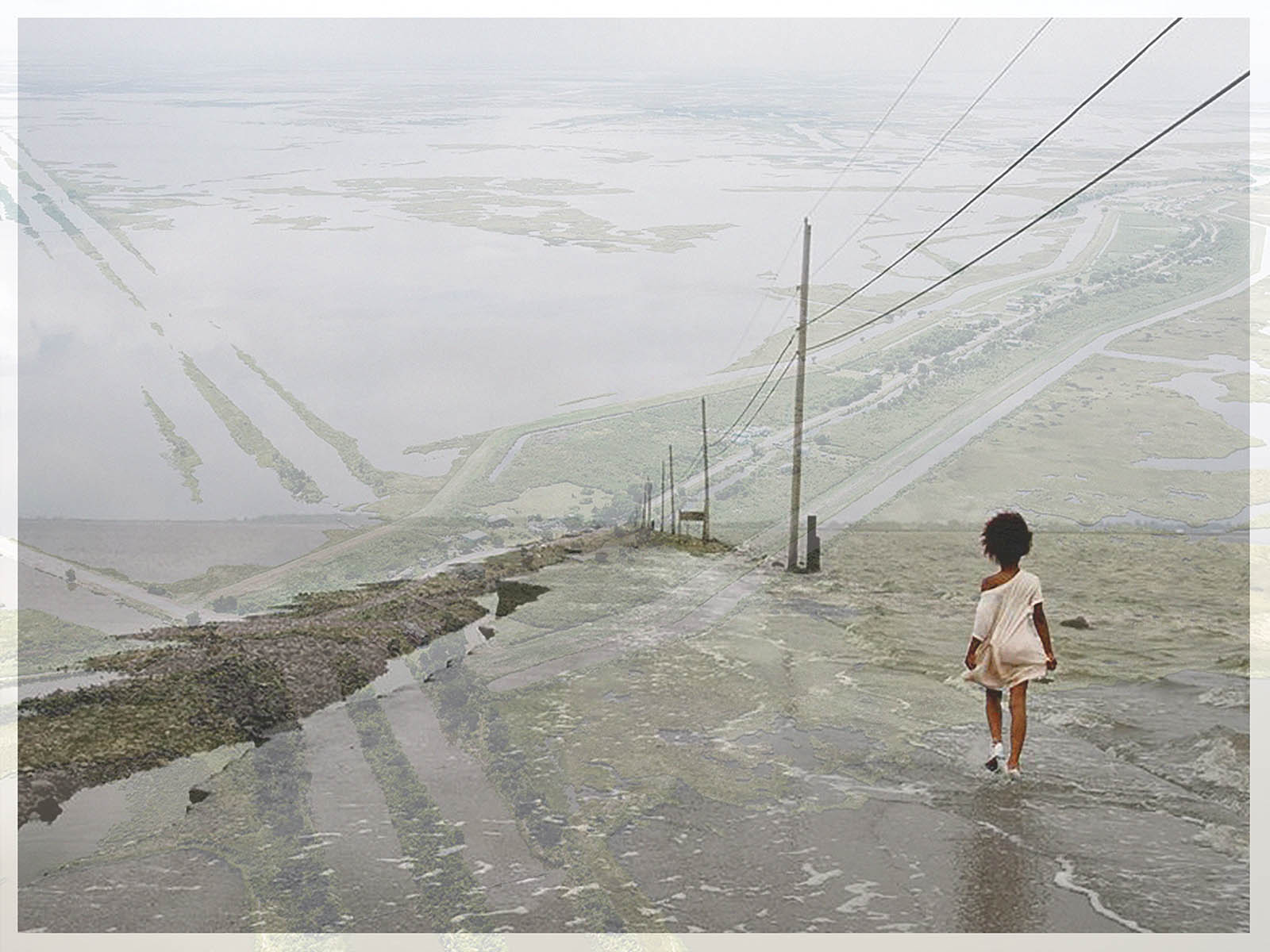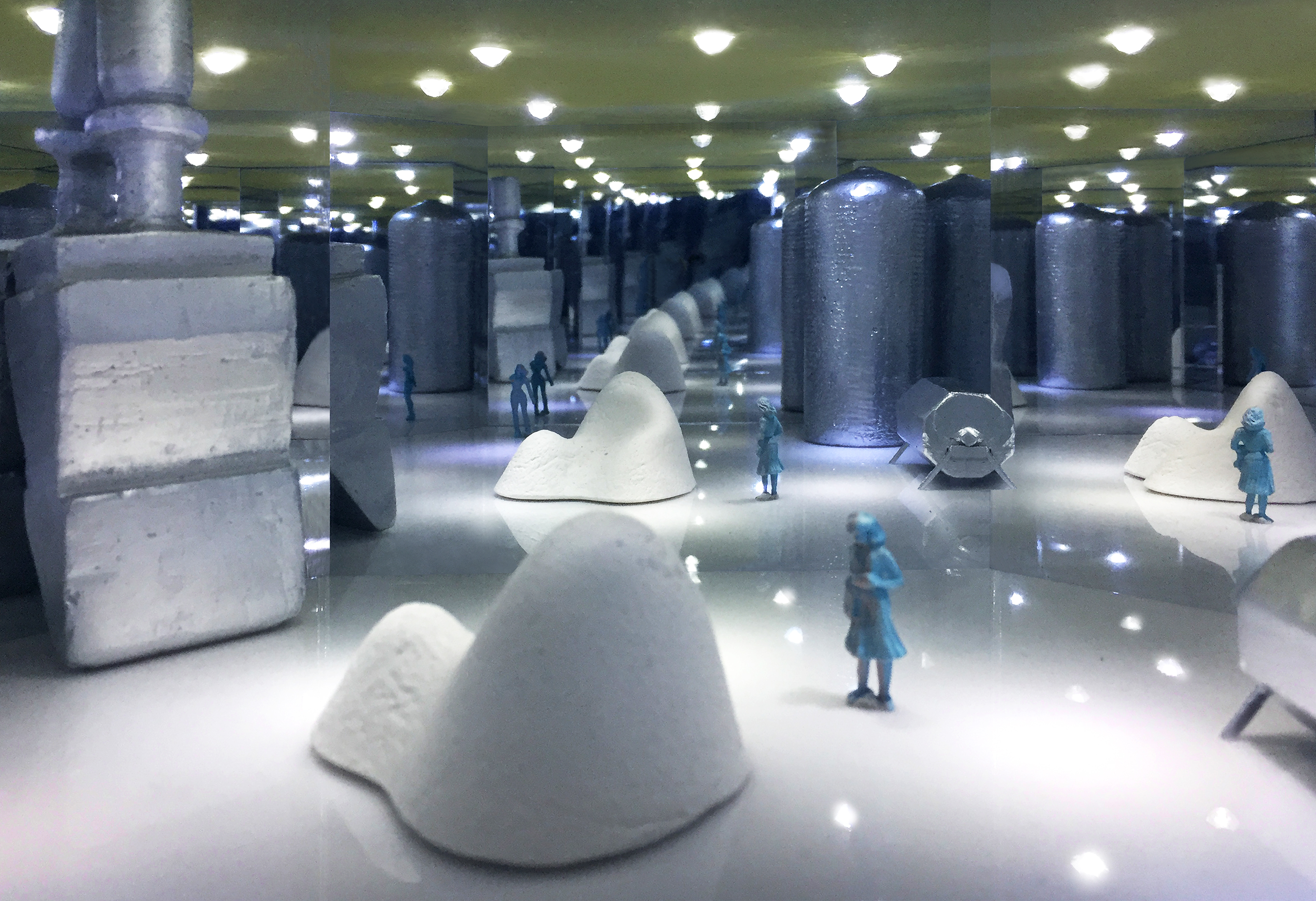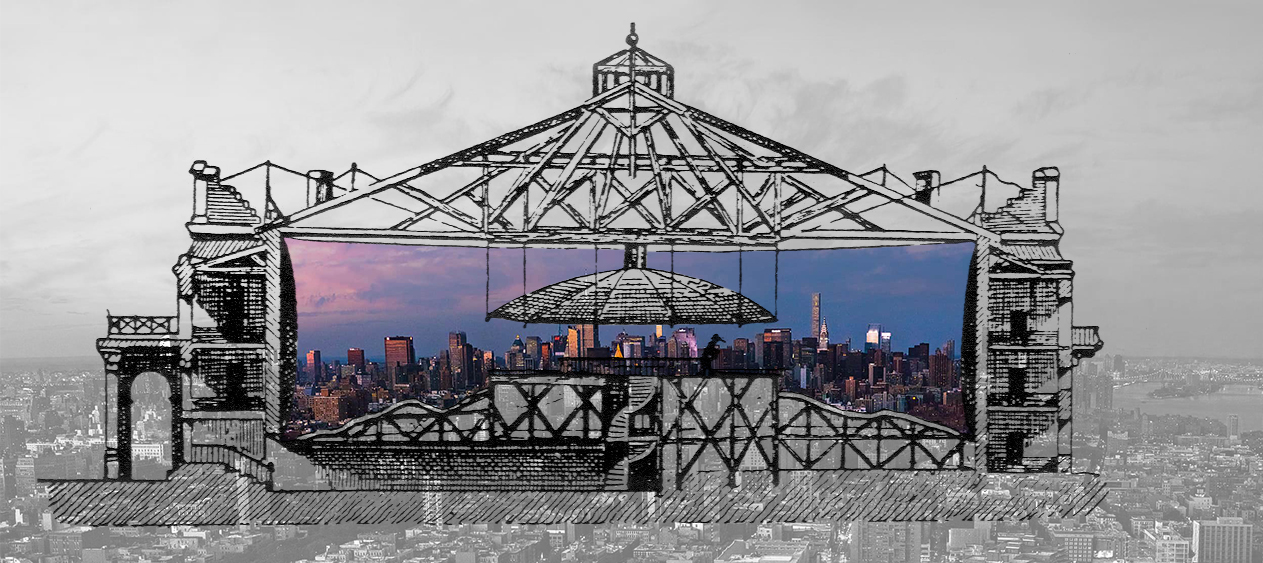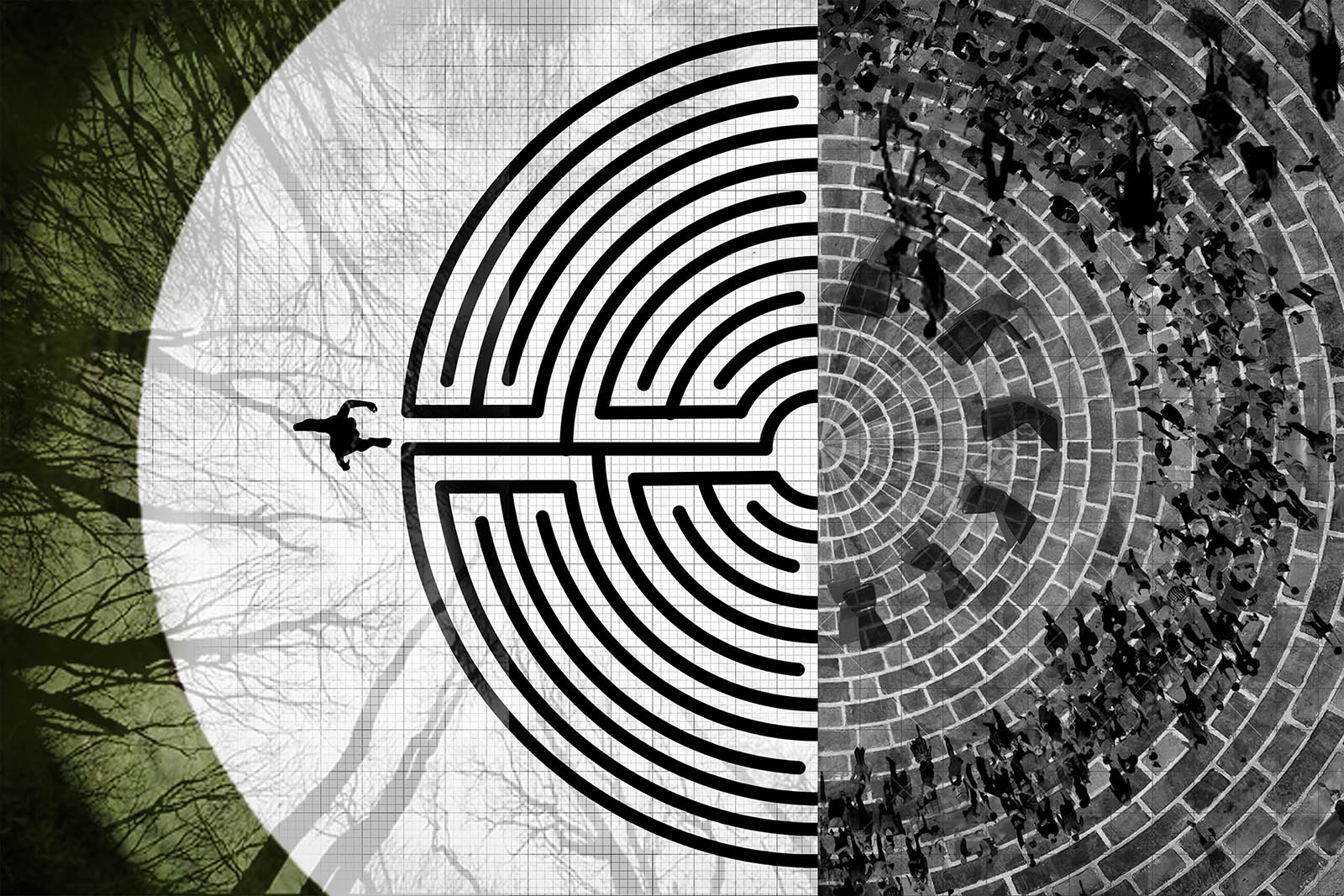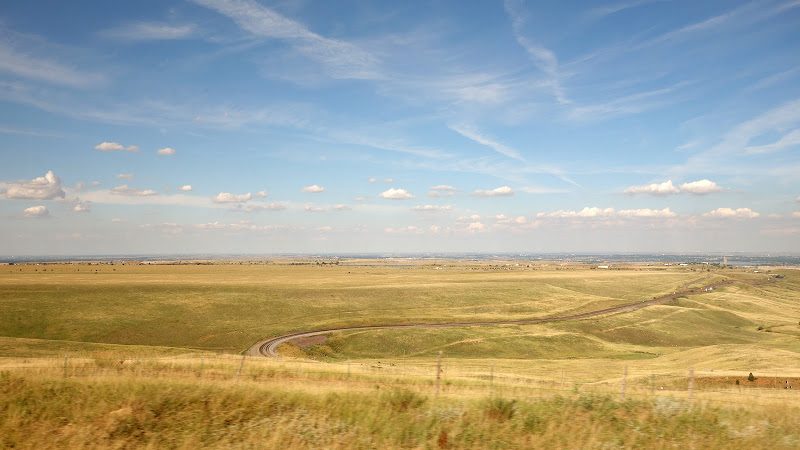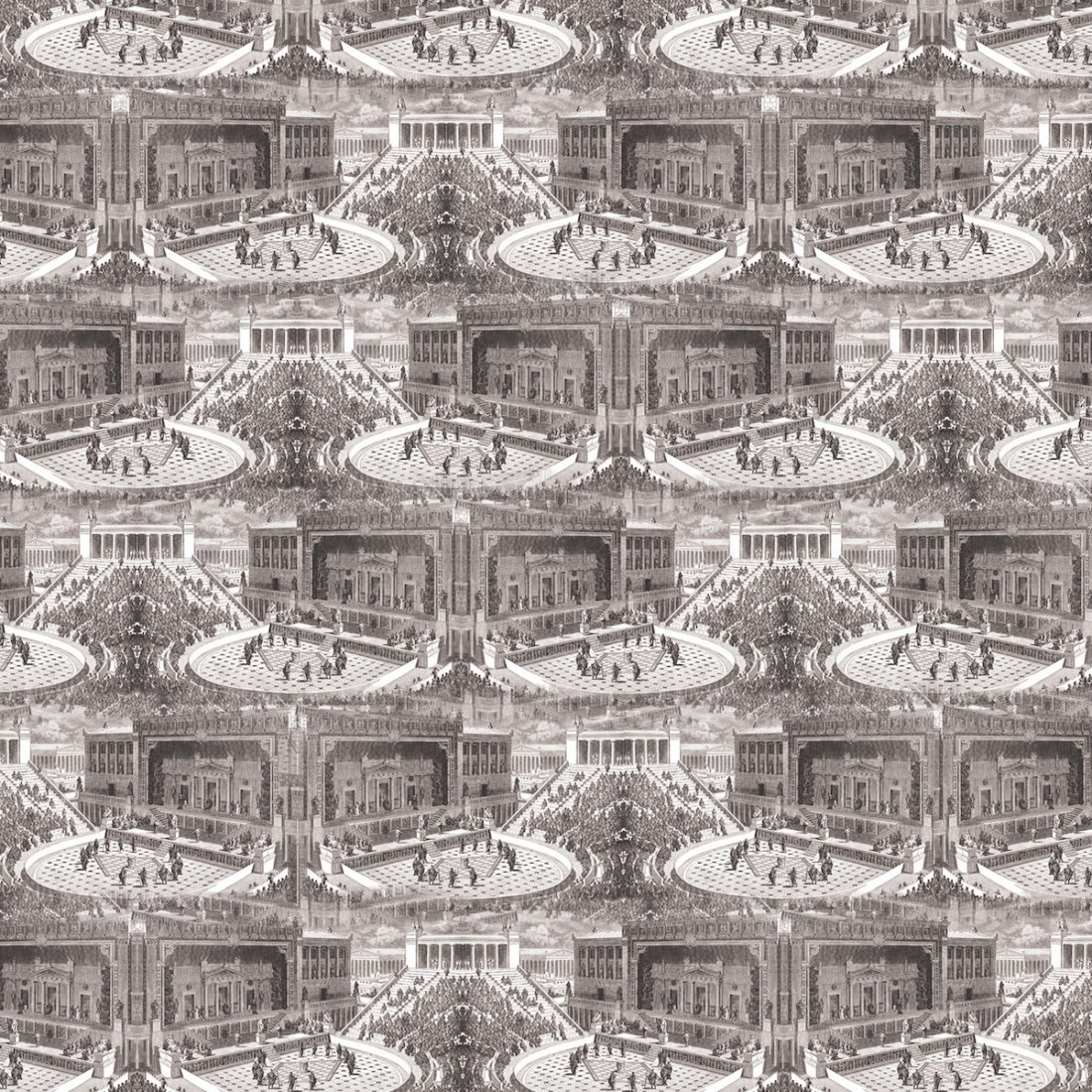Bewildered in Banff: Displacing the Contours of Colonization in Canada’s National Parks System
Tiffany Dang (MLA I ’17)
Recipient of ASLA Certificate of Honor and ASLA Certificate of Merit
The theory and practice of Indigenous anticolonialism, including Indigenous anticapitalism, is best understood as a struggle primarily inspired by and oriented around the question of land.
—Glen Coulthard, Red Skin White Masks (2014)
Canada’s National Parks system is built on a perpetuation of the myth of remote picturesque beauty and wilderness, masking a colonial strategy of territorial dispossession that has been ongoing since the establishment of Banff National Park in 1885. Capitalizing on the myth of the frontier, the Canadian Pacific Railway Company erected the Banff Springs Hotel inside the park in order to draw Victorian elites westward for holiday purposes.
Less than two decades after Canadian Confederation, the National Parks system enforced the assimilationist policies of the Indian Act (1867), by strengthening the hierarchical relationship between the metropolis and the hinterland, forcing indigenous populations to assimilate into Canadian cities or be displaced onto reservations.
Contemporary discussions on climate change, resource conservation, and indigenous land claims have been dominated by strategies of migration, retreat, and relocation; all of which are rooted in the systematic displacement and disposition of weaker and poorer nations and societies by those that are more powerful. These strategies—largely products of colonialism and capitalism—have resulted in grave ecological and political consequences.
The perpetuation of the landscape picturesque results in the exploitation of land vis-à-vis its depoliticization, than can a re-representation and re-projection of land with respect to temporal cycles of ecological and territorial processes provide an alternate discursive base for issues relating to land, climate, and resources?
Rise: A Guide to Boundary Resistance
Alexandra Mei (MLA I ’17)
The distinction between land and water is both vague and fabricated for regulatory purposes. For a steadily increasing amount of coastal communities, this line on the map is not only moving constantly, it is formed by physical characteristics on the ground that the Army Corps of Engineers has determined to be the boundary between private land and state-owned water. In the case of the Biloxi Chitimacha Choctaw tribe on the Isle de Jean Charles, Louisiana, this “ordinary high water mark” divides native and state properties. This Native American community, forced to leave for a landlocked parcel farther north, will eventually lose their island to the state as this mark rises with the sea over the next 50 years. However, if the water mark can be obscured, altered, and blurred, the tribe will maintain ownership of their land and have a reason to return after they leave. With such acts, cultural memory remains tied to the island and acts as an agent for communal identity by validating the continuance of local ownership of the island left behind. Through a re-representation of the water mark, suggested acts of community resistance, and articulated potentials of the island’s form over time, this project imagines a cultural commitment to the disruption of the ordinary high water mark. By doing so, the preservation of the native community’s connection to the island challenges such jurisdictional boundaries and upholds a connection to the land that is driven by collective identity and memory.
Art of Assembly
Evan Farley (MArch I ’17)
The production of aura in modern and contemporary art has expanded. Today, installation artists are redefining the line between art and architecture through their mastery of experience and spectacle. Yet the market reveals art as an overly commodified, exploited monetary object resulting in the factory production of artwork. As a discipline with the authority to shape experience and perception, its value needs to be reestablished.
Simultaneously, there is a nostalgia for a time when we used to make things. As the factory thrives, cities like New York are witnessing the reemergence of manufacturing in urban life.
Art of Assembly generates an identity, calling on a new audience to reconcile production and consumption. By collapsing art and industry, this project examines the current condition of curation and presentation and extracts new social constructs. In doing so, the factory acts as a vessel for a new institution that weaves together two parallel flows of production—art and industry—to enhance creative culture.
Untitled 01 | 170219
Zack Matthews (MArch II ’17)
The purpose of this thesis is to retool the space of a contemporary social condenser through highly perceptual means, finding methods of spatial composition that enhance nonvirtual social exchange—a pleasure progressively inaccessible without technology. By what means does contemporary public space augment social transactions for a culture who now only needs a smartphone to do so? Upon revisiting the masterful perceptual distortions seen in 17th-century painting, these effects are abstracted and materialized as new possibilities for the interior collective space of the contemporary subject.

Feral Frames
Zahra Safaverdi (MArch II ’17)
Throughout recent history, architecture’s response to the faculty of imagination (which here is considered the mechanism that receives data, schematizes it, and makes an image out of it) has been through two different modes: the mode of object-making and the mode of world-making. These two modes belonged to two different spheres completely separate from one another. In either case, the distinction between the product of imagination, the physical manifestation of the image, and that which belongs to reality—the normality of the quotidian life—is clear. This clarity, this separation, this profound emphasis on keeping the realm of the real discernible from the realm of the imaginary is the product of modernity. Looking back at historical references beginning with the cave paintings in Lascaux to the Gothic era, the Renaissance, and ending in the late-Baroque, one can see that this boundary has been rather subtle and there was not a rigid distinction, or a necessity for one, between the two.
By relying on the historical evidence of late-Baroque framing, the possibility of a third mode would emerge: objects that could act as an occupy-able world with spatial qualities and orientational attributions. This is the moment when the boundary between the imaginary and the real is blurred and the physical, rigid threshold is broken. This alternative domain would, then, not only become a quasi-physical manifestation of imagination but a way in which these two realms could be welded to each other with a less pronounced seam. Frames, with their latent ability to exist in two paradoxical modes of existence simultaneously (that of separation and that of connection), have the capacity to expand and become a place of in-betweenness and a state of limbo.
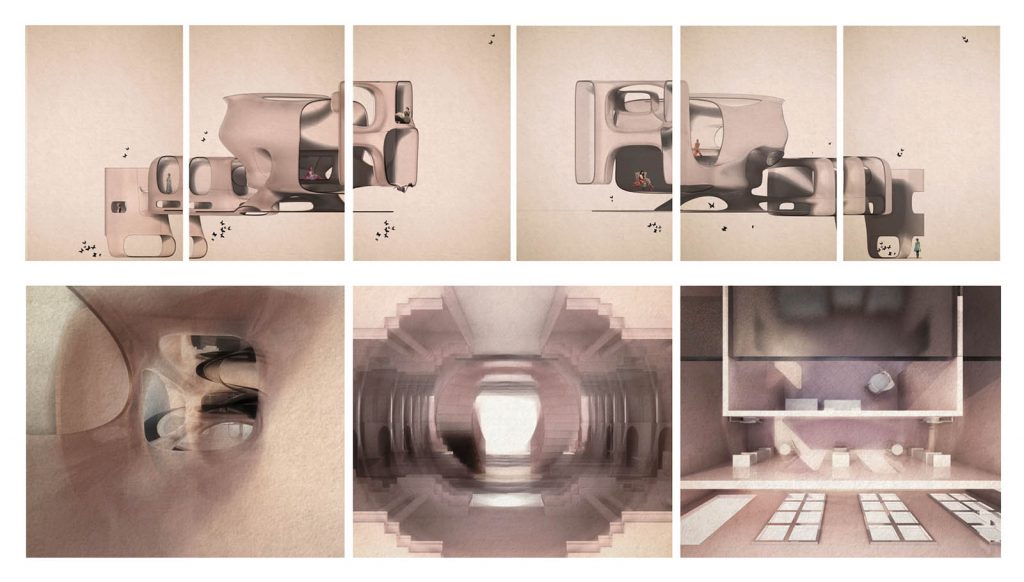
Constructing Panorama: vision, views and the non-visible
Benjamin Halpern (MArch I ’17)
The thesis confounds a model of vision, the panorama, with both the design of architecture and the construction of a project.
Coined as a technical term to describe a special type of architecture for entertainment in the 19th century before its meaning shifted to a metaphor for a fully comprehensive overview, panorama is established as a cultural institution in continual evolution distinct from the many mediums, disciplines, and devices that it permeates, yet always situated within a specific historical context.
The thesis explores the contemporary idea of panorama—split between an embodied, dynamic form of vision and the easily accessible, static view for sale. A two-part proposal projects a future high-rise luxury condominium tower within a showroom complex designed to sell such speculative real estate.
The paradox of the panorama is that the excess of coherence in fact provides the most partial view. Thus the critical question: what is the non-visible?
Societal Simulations: A Carceral Geography of Restoration
Dana McKinney (MArch I/MUP ’17)
Upon re-entry, approximately three out of every four individuals reoffend, resulting in a relentless cycle of recidivism. This thesis advocates for community supervision by inventing spaces of reconciliation and rehabilitation, exploring alternatives to lessen recidivism while reviving the broader community. Justice, equity, security, and imagination are deployed across an urban landscape to create a fully immersive environment for restorative programs. The village inoculates recidivism.
Situated in Newark, New Jersey, a city plagued by crime and incarceration, the village provides housing, retail, and maker spaces for employment and job training, restorative justice spaces, and public amenities. The housing supports a variety of household structures: co-living, single-family, and multi-generational. Every housing unit incorporates private exterior space, allows for ample natural light, and rejects corridors typical to prisons and public housing. Positioned throughout the site’s courtyards, restorative justice spaces provide calming environments for meetings between victims, offenders, and community members. Each space frames its own surreal landscape—a radical departure from the depressed surrounding environment. Public programs, including an amphitheater, community room, and playscape, stand along a public path engaging adjacent neighborhoods. As a heightened simulation of society, the village provides housing and financial stability, improves interpersonal relationships, and enhances residents’ self-worth, encouraging successful reentry into society.
This thesis critiques incarceration as a socio-spatial condition and institution that I fundamentally seek to dissolve. It is not a prison. Rather, it is an urban intervention of restoration and hope.
Riding the Rails: A Platform for Speculation on American Urbanization in the Age of High Speed Rail
Melissa Alexander (MAUD ’13)
from the Prologue:
Unlike the United States, riding a train in most other countries is liberating. Travel is brisk, stations are attractive and clean, and trains are well attended and comfortable. Japan introduced the first high-speed train from Tokyo to Osaka in 1964, and since then speeds have increased and high-speed rail (HSR) technology has been adopted by industrialized countries throughout Europe, Asia, and the Middle East. Train travel there is more environmentally friendly, more convenient, and more comfortable than budget air travel. Trains are the preferred mode of transit for distances between 75-500 miles in countries where it is available, because, at nearly 200mph, it is quicker than cars and more convenient than planes. Technology aside, trains shape the social space of cities. Whether historic, renovated, or brand new, train stations are the nexus of urban culture and commerce, the heartbeat generating and regenerating a vibrant urban community.
Despite the broken condition of Amtrak, train travel could make a comeback in the US. American highways are congested and crumbling, daily commute times are inhumane, and many airports are at maximum capacity. Citizens are ever more aware of the environmental damage caused by carbon emissions from cars and planes. And, in a migratory ‘about face,’ Americans are now moving into cities instead of out of them. As such, there is renewed interest in all forms of transit. In 2009, as a part of the American Recovery and Reinvestment Act, the Obama administration designated over $8 billion towards high-speed rail initiatives, and unveiled a ‘Vision for High-Speed Rail in America.’ Following the announcement, forty states and the District of Columbia requested over $100 billion for high-speed train projects. The demand, at least for studying high-speed rail, is there. In January of 2015, California broke ground on its own high-speed route, largely along the San Joaquin corridor through the valley, to connect San Francisco and Los Angeles. In Florida, a high-speed rail project connecting Tampa and Orlando started but was disappointingly shelved in 2014. And in Texas, a group of investors is making progress towards a privately funded route between Dallas and Houston. If, after fifty years of stalling, Americans are finally ready to address the problem of mobility in the US, we must look outside of our own the traditional transportation planning processes that are still dominated by the tools, methods and assumptions, political biases, procedural failures, and instilled human behaviors of our past and current planning processes.
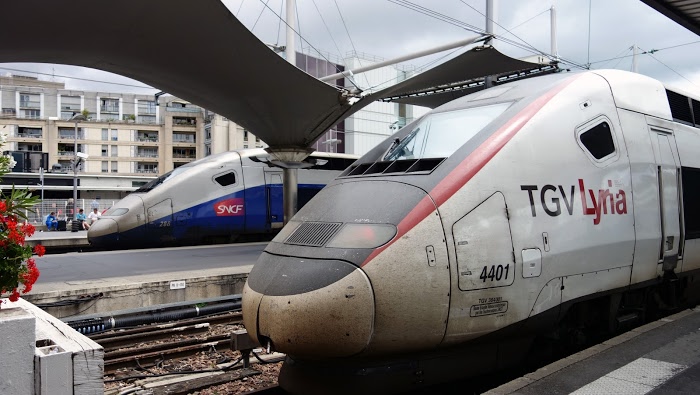
Two models of TGV (Train à Grande Vitesse) pull into a station in France. Source: Author
In order to accomplish this, designers need to reconnect with the rich spatial legacy of the train in nineteenth century America and understand the physical implications of 21st century high-speed trains. Using travel as a lens of inquiry, Riding the Rails explores the physical implications of the railroad in the past, present and future at several scales of intervention and in a variety of cultural contexts. Drawing from first-hand train passage throughout Europe and Asia, the resulting body of research establishes a platform from which to speculate on new models of American urbanization in the age of high-speed rail.
Part 1: The Birth of Restlessness explores the implications of the railroad on the physical development of a young and expansive United States from the early nineteenth century to World War II.
Part 2: Waiting on a Train focuses on the contemporary physical implications of high-speed Rail from World War II to the present day, using case studies from Europe and Asia to identify the new and exciting ways in which HSR invents new architectural and urban typologies, compresses space, and opens up new operative scales that supersede traditional scales of design and planning.
Part 3: I Hear that Train A-comin’ speculates on the future of passenger rail in America, which, due to the dominance of the car, is a challenging environment for high-speed rail.
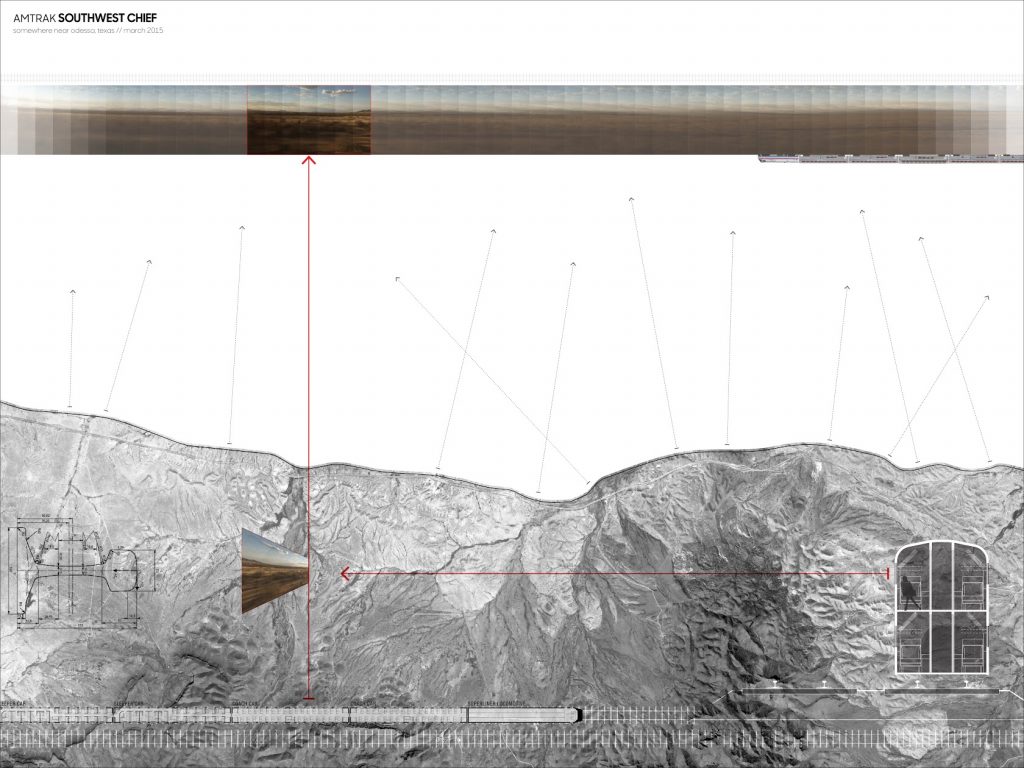
On a train, territory is experienced laterally and peripherally, and the windows continually reframe the landscape.
Visit the project website at RidingTheRails.org.
The City’s Lobby: Making Space for Social Interaction in Tourism
Anita Sellers Helfrich (MArch I ’17)
In a globalizing world, tourists are a growing part of the population in cities. As short-term visitors who are away from home and work, they have unique qualities that differentiate them from permanent residents. While this often leads to disconnections between tourist-heavy areas and their surroundings, it can also be seen as an opportunity for the city’s architecture to better integrate a changing user base. Most tourist attractions are designed to maximize the commercial value of tourists through an efficient circulation of the masses. They fail to appreciate the fact that these masses are made up of individuals from around the world who were brought together by a shared interest. This thesis proposes a space that celebrates the diverse community of tourists it attracts—a space designed for lingering rather than transience to promote the collective enjoyment of a destination.
Bringing hospitality into the public realm, the city’s lobby welcomes all tourists to get oriented in a centralized place without imposing on the local context. Programmatically, it provides amenities that serve the displaced tourist who feels limited by the belongings in their luggage. Spatially, it offers claimable areas for the opportunistic tourist to sit down and learn from the community of tourists around them. Urbanistically, it associates with an existing attraction to encourage the curious tourist to comfortably explore a new place. By adapting to an evolving population of tourists while representing the local character that they have come to experience, the city’s lobby is the tourist’s own in an unknown place.
Medial Ground: A Critique on the Disembodied School
Allison Cottle (MArch I ’17)
Medial Ground critically examines the role of space and the consequences of its elimination in higher education. Positing that the spatial dimension has been largely discounted in the production of online coursework, this project proposes an alternative as a means to fuse the major benefits of online coursework and the traditional school. The thesis proposes a school for distance learning—remote schools where students gather to learn. Targeting rural communities with limited access to quality
higher education, the project introduces a virtual vein—a means of passage for the exchange of information between the city and the isolated community—actualized within a surrogate.
The thesis examines the bodily experiences essential to learning, the development of interpersonal relationships and the perception of an educational community, and constructs a stage for a performative architecture. The theatricalization of the commonplace mimics the perpetual hum at the heart of a campus despite an enormous disparity in scale. Similarly, when the theatrical becomes commonplace and the stage exists as an assemblage rather than a focal point, the apprehension of
participation may be overcome. The school for distance learning becomes a fusion of the egalitarian agora and hierarchical theater. As a typology, a school for distance learning must turn both inward and outward, be both generic and specific, and must be small, yet monumental. Visibility, audibility, and physical proximity must be curated at the scale of the classroom, the scale of the school, and the scale of the network.
